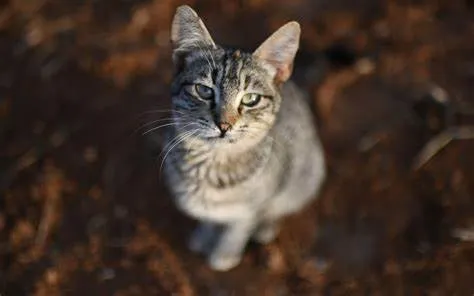In a recent development, India confirmed its first-ever case of H5N1 avian influenza in domestic cats, a significant health concern. This case was reported from Madhya Pradesh’s Chhindwara district, a region that shares a border with Nagpur, where several big cats were found to have succumbed to bird flu in December 2024. The discovery of the virus in domestic cats has raised alarm about the virus’s potential to evolve and spread to humans.
The Detection of Bird Flu in Cats
The case emerged in January 2025 when researchers from the Indian Council of Agricultural Research (ICAR) – National Institute of High Security Animal Diseases (NIHSAD) and the Union government’s Animal Husbandry Department identified the presence of H5N1 in domestic cats. The infected cats exhibited high fever, loss of appetite, and lethargy, eventually succumbing to the virus within one to three days. The case was notable not just for its geographical location but also for being the first documentation of the 2.3.2.1a lineage of the H5N1 virus infecting domestic cats in India. This lineage had been responsible for the outbreaks in the country’s poultry sector.
What Scientists Found
A thorough investigation revealed that the virus in cats had a strain with significant mutations, suggesting that the virus was evolving. Scientists confirmed that the virus detected in these cases was a reassortant strain, meaning it contained genetic material from multiple sources, including wild birds in Bangladesh and a strain circulating in South Korea. Analysis of the virus also found a 99.2% similarity to an H5N1 strain detected in an Australian traveler returning from India in 2024. This raised questions about whether similar strains of the virus were already circulating in India and potentially adapting to mammalian hosts, including cats.
The study, which examined samples from seven cats in the same locality of Chhindwara, confirmed the presence of H5N1 in three of the cats. The researchers successfully isolated the virus from blood samples and conducted whole-genome sequencing to understand its evolution and potential risks. The results of the sequencing revealed that the virus was adapting to mammalian hosts, which is of particular concern.
Why Is This a Cause for Concern?
H5N1, traditionally known as a bird flu virus, has long been a source of concern due to its pandemic potential. The virus primarily spreads among birds but can occasionally jump to mammals. While human infections remain rare, the possibility of the virus evolving to spread more easily among humans is a significant threat.
Virologists have expressed concerns that the virus is adapting to mammals, and such mutations could eventually lead to human-to-human transmission. Experts have warned that this possibility could be catastrophic, especially since humans have no immunity to this strain. If the virus were to become transmissible between humans, it could lead to a new pandemic.
Dr. Suresh Kuchipudi, one of the researchers involved in the study, pointed out that the virus’s ability to mutate and spread between species increases the risk of it acquiring mutations necessary for human-to-human transmission. He also emphasized the need for heightened vigilance and preparation, particularly in the face of a virus that is continually evolving.
How Does Bird Flu Spread and What Are the Risks to Humans?
Avian influenza primarily affects birds but can spread to mammals through direct contact with infected birds or contaminated surfaces. Humans, though rarely infected, can contract the virus through close contact with infected animals. Since the virus is capable of mutating and adapting to new hosts, there is an increasing concern that it could evolve into a strain capable of human-to-human transmission.
Scientists are closely monitoring the situation, given that some mutations in the virus could potentially make it more transmissible to humans. If the virus continues to mutate in mammals, the chances of it spreading to humans increase. Although human-to-human transmission is not yet efficient, virologists are concerned that with further mutation, it could become a greater public health threat.
Precautions to Take
For now, the risk of human-to-human transmission remains low, but experts recommend taking precautions to limit exposure. People in regions with confirmed cases of bird flu should avoid direct contact with sick or dead birds and take precautions when handling poultry or wild animals.
In the case of domestic cats, it is advised to:
- Prevent cats from coming into contact with sick or dead birds and other wildlife, as this could expose them to the virus.
- Keep cats indoors to minimize the risk of exposure to infected animals, particularly birds.
- Ensure that any meat fed to cats is fully cooked to eliminate the possibility of the virus being present in raw meat.
- Wash hands thoroughly after handling cats or coming into contact with birds or animals that could be carriers of the virus.
- If you live in an area with known outbreaks, disinfect shoes and clothing before entering the house to avoid tracking the virus inside.
- Avoid feeding cats unpasteurized dairy products or raw meat, which could be contaminated with the virus.
Can Bird Flu Spread to Humans from Cats?
The key question being asked by many is whether domestic cats can transmit the virus to humans. While the primary mode of transmission remains bird-to-human, there is a potential risk of the virus adapting to mammals, including humans. Experts believe that if the virus continues to evolve, it could eventually spread from humans to humans. However, it’s essential to note that, as of now, human-to-human transmission of H5N1 remains inefficient.
Nonetheless, the detection of H5N1 in domestic cats highlights the potential risks of zoonotic diseases, which can jump between species. With the virus now found in both wild birds and domestic cats, it’s crucial to continue monitoring its spread across species and take appropriate measures to prevent further infections.
While the detection of bird flu in cats in India is cause for concern, it does not yet warrant panic. The virus’s potential to mutate and spread to humans is something that scientists are closely monitoring, and preventive measures are being put in place to minimize the risk of a larger outbreak.
Public health officials and scientists recommend that people avoid contact with infected animals, including sick or dead birds and cats that may have been exposed to the virus. By following safety guidelines and staying informed, the spread of the virus can be controlled, and the risk to human health can be minimized.
As the situation evolves, continued research into the virus’s behavior and mutations will be crucial in understanding its potential to adapt to mammals and humans. For now, staying vigilant and practicing proper hygiene are the best ways to protect both pets and humans from the H5N1 avian influenza virus.























